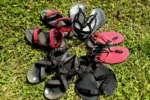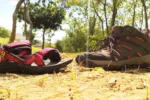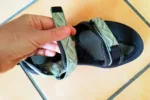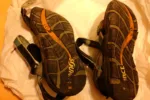Can you hike in sandals? Absolutely – Here’s Why & How.
This post may contain affiliate links. This means that we may receive a small commission from purchases through those links. Read more in our affiliate disclosure.
When I first heard the term “hiking sandal”, I was fascinated. What do you mean, I can hike in sandals, without sweaty feet or clunky heavy boots? I immediately needed to know more. If you are in the same boat, this article is for you!
Yes, you can absolutely hike in sandals! They are very comfortable: Breathable, light-weight, and you can hike with a more natural feel. It’s best to use specially designed hiking sandals with synthetic, thick straps and durable soles with good traction (typically Vibram). Sandals are ideal for hot weather, and when you are around water: Beaches, river crossings, and rainy days. Start on easy trails, and work your way up as far as you are comfortable. Noteworthy brands of quality hiking sandals include Source, Xero, Teva, Shamma, Chaco, Luna and Keen, offering a range of vastly different styles.
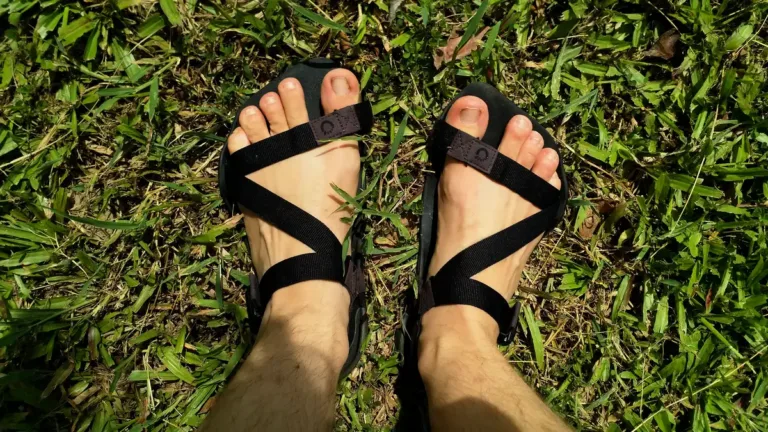
But, you can’t just slip on some flip-flops and set out on a 40 km mountain climb. To really make it a worthwhile experience, you need to take a few things into account.
Table of Contents
Why Would You Hike in Sandals?
Now, you might be thinking, “Sandals? For hiking? Really?” And my answer is, “Absolutely, friend!” Here’s why:
Breathe Easy: With boots, your feet are often trapped in a sweltering, sweaty environment. Switching to sandals allows your feet to feel the breeze, so that sweat can evaporate, and with it the associated discomfort. You’ll be surprised at how invigorating it can feel to have the wind between your toes.
Light on Your Feet: Every ounce counts when you’re hiking, especially on long-distance treks. Traditional hiking boots can weigh a lot, adding extra pounds to your load – that you have to lift on every step you take. Hiking sandals are significantly lighter, some even feel like you’re wearing nothing at all. This can really boost your hiking endurance!
No More Sweaty Socks: With boots, changing socks can be a hassle, especially when they’re damp with sweat or rain. But when you’re hiking in sandals, soggy socks are a problem of the past. Your feet stay dry, you don’t need to bring extra socks, and you’re much less likely to get athlete’s foot or blisters.
Closer to Nature: Hiking is all about reconnecting with nature, right? So why separate your feet from the earth with thick, heavy boots? Sandals give you a chance to feel every contour of the ground, which can be a deeply grounding experience. It’s like a gentle reminder with every step that you’re a part of this beautiful world. (You don’t have to, though. There are a lot of sandals with really thick, cushioned soles.)
Easier on the Blisters: If you’ve ever suffered from blisters on a hike, you know how miserable they can make your experience. Blisters are caused by friction of ill-fitting boots or the dampness of sweaty socks. With sandals, you still have to make sure they fit well so you won’t get sore spots – but I’ve never once had a blister in a sandal.
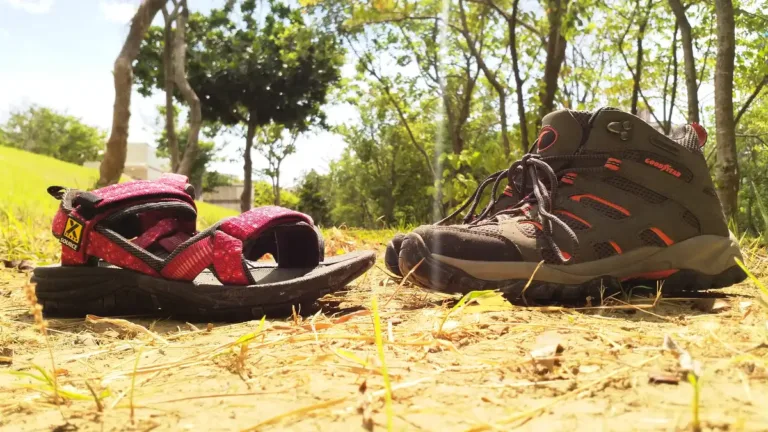
If you want to find out more about the pros and cons of hiking sandals vs boots, click here!
What are Hiking Sandals?
As you’ve probably guessed, hiking sandals are a special breed of sandals that have been designed with the great outdoors in mind. You might be asking, “But what makes them different from the sandals I wear to the beach or around town?” Great question!
Here are a few key differences:
Durability: Unlike typical casual sandals, hiking sandals are designed to withstand the rigors of the trail. This means they often have tougher materials and more robust construction. They’re built to survive the elements and tough terrain, from rocky paths to river crossings.
Traction: One of the most important features of a hiking sandal is a sole that provides solid traction. They typically have thicker, rubber outsoles with deep lugs to help you grip the terrain underfoot and stay steady on your feet, no matter how slippery or uneven the trail might be.
Support: Many hiking sandals are designed with more foot support in mind. They often include features like a contoured footbed for arch support, a heel cup for stability, and even a shank for added rigidity. There are minimalist models, which instead focus on letting your feet move naturally, too.
Adjustability: Hiking sandals usually have adjustable straps that allow for a customized fit. This helps keep the sandals secure on your feet, even during more challenging hikes. Also, the straps tend to be wider than on normal sandals, and maybe even cusioned, for extra comfort.
Quick-Drying and Breathable: Most hiking sandals are made with materials that dry quickly, which is a big plus if you encounter water on your hikes. They’re also designed to be breathable, which can keep your feet cooler and more comfortable in hot weather.
Where should I Use Hiking Sandals?
Oh, there are so many glorious places where hiking sandals truly shine!
Hot Weather Adventures: In sweltering summer temperatures, hiking in boots can feel like you’re walking in portable saunas. Sandals, on the other hand, are excellent at keeping your feet cool. The open design allows for optimal airflow, keeping your feet dry and reducing the risk of heat-related foot issues.
Sandy Trails: Boots and sand? Not a great combo. Sand can get trapped in boots, causing discomfort and potentially damaging your footwear. But sandals? They love the sand! Whether you’re trekking along the coastline or exploring sandy desert trails, sandals make the journey much more enjoyable.
Crossing Rivers and Streams: Water crossings can be tricky with boots. You either have to take them off or risk getting them soaked. With sandals, you just march right through! They dry quickly and provide good traction, even on slippery rocks – providing you’ve made sure to wear the right sandals. If it says Vibram on the sole, you’re good!
Rainy Climate: When the ground is covered in puddles, you’ve got two options: Carefully dance around them so as to not soak your boots, or splish right in there in your sandals. It feels nice!
Short, Easy Trails: For those quick nature walks or relaxed strolls in the park, sandals provide a comfortable and convenient alternative to bulky boots. They’re easy to put on and take off and often just as sturdy and durable for less demanding terrains.
More difficult Trails: Hiking sandals can handle much more than a walk though the park, though. I’ve been on volcanoes and snowy mountain peaks in them. This one is really a question of personal preference – you have to feel out, on progressively difficult terrain, where your sandal comfort zone ends. Start with something easy and see where you end up!
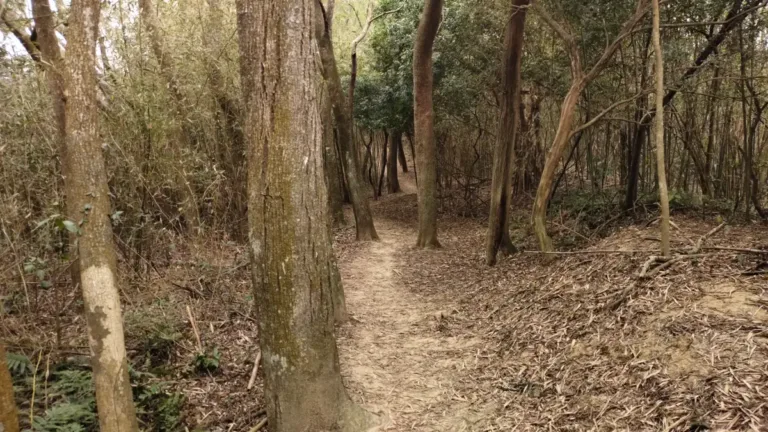
Is it OK to Travel in Sandals?
You betcha it is! In fact, hiking sandals might just be your new favorite travel footwear. Here’s why:
Durability for Exploration: Hiking sandals are designed for the trail, so they’re built to withstand a good deal of wear and tear. Exploring a new city or wandering through ancient ruins won’t faze them! Your feet will be comfy, and your sandals will last through your journey, and many more to come.
Hot Climate Comfort: Travel often involves plenty of walking in hot climates. Hiking sandals are perfect for this: They allow your feet to breathe, and keep them cool as you soak in the sights.
Beach Ready: If your travel plans include the sea, hiking sandals are a no-brainer. They’re perfect for a walk on the beach, and when it’s time to dip your toes in the water, they slip off in a jiffy. And then slip them back on without worrying about the sand! It’ll come right out once your feet are dry.
Easy to Pack: Hiking sandals are much easier to pack than boots, as they’re thinner – and lighter! Plus, they can double as casual footwear when you’re dining out or exploring local nightlife.
Versatile: In a pinch, hiking sandals can be a jack-of-all-trades. They’re rugged enough for a spontaneous hike, comfortable enough for a day of sightseeing, and laid-back enough for relaxing at a café.
You can take them off on the plane: Your feet don’t get stinky in sandals – so you’re free to kick them off wherever without making other people’s noses angry.
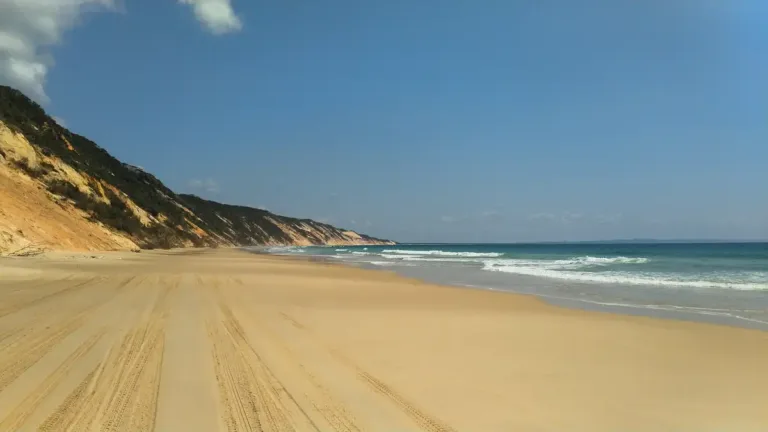
What Sandals Can I Hike In?
You might be wondering, can you just grab any old pair of flip-flops and hit the trail? Not quite. You have to consider a few points:
- Durability: Look for sandals with sturdy soles and tough, synthetic straps. Vibram soles are renowned for their longevity and good grip, even on rough terrain.
- Fit: The right fit is crucial. Ill-fitting sandals can lead to sore spots or tired feet. Your sandals should fit snugly but not too tightly, and your foot should not hang over the edge of the sole – at least not in front, that’s how you get stubbed toes.
- Protection: Depending on your trail, or if you’re not used to wearing sandals, you might want a bit more protection. Some sandals come with a thicker sole or even a toe guard to protect your feet from sharp rocks and debris.
There are various sandal designs, from closed-toe to thong models, providing different levels of protection, comfort and weight. We have an entire article on how to choose which sandal works for you.
Is it OK to hike in Birkenstocks?
While Birkenstocks are known for their comfort, they fall short when it comes to hiking features. They lack the sturdy soles and secure straps you’d need on rough terrain. So, they might be great for a casual stroll in the park, but they’re not the best choice for serious hiking.
Is it OK to hike in Teva Sandals?
Teva sandals are a well-loved choice among hikers. They’re known for their excellent traction, robust construction, and the adjustable straps that offer a secure and comfortable fit. Whether you’re crossing rivers or exploring rocky trails, Teva sandals won’t let you down.
Is it OK to hike in Keen sandals?
Keen is another solid option for hiking sandals, especially their closed-toe models. They offer a good level of foot protection, which is particularly beneficial if you’re just transitioning from boots to sandals. Their thick soles handle rugged terrain well, and they offer good arch support for longer hikes.
What Are Good Brands of Hiking Sandals?
There are plenty of fantastic brands out there crafting top-notch hiking sandals:
- Source: This brand is known for its focus on creating sandals that match the natural shape of the foot, providing an excellent balance of comfort and support. Source sandals often feature a molded footbed, adjustable straps, and a cleverly designed sole for maximum grip.
- Teva: A classic choice for outdoor enthusiasts, Teva offers a blend of comfort, durability, and style. Key features often include rugged rubber outsoles for excellent traction, adjustable straps for a secure and custom fit, and a cushioned footbed for all-day comfort. They’re well-suited to a range of environments, from water-friendly adventures to rocky trails.
- Chaco: Known for their excellent arch support and adjustable straps, Chaco sandals offer a customizable fit that’s perfect for long-distance hiking.
- Keen: Known for their protective toe box, Keen sandals are a fantastic choice if you’re looking for a little extra security. They often feature a sturdy, high-traction outsole and a quick-dry webbing that makes them a great choice for water-based activities. Their footbed design also tends to offer good arch support and cushioning, which can be beneficial for longer hikes.
- Merrell: With a reputation for comfort and durability, Merrell offers a range of hiking sandals that combine the lightness of sandals with the sturdy grip of hiking boots. They have many closed-toe options.
- Xero: If you’re into the barefoot or minimalist movement, Xero is a great choice. Their sandals are designed with a focus on natural foot motion, featuring ultra-flexible soles that let your feet move as they were designed to. Despite their minimal design, Xero sandals don’t skimp on durability or traction.
- Luna sandals are another great minimalist choice. They champion simplicity and functionality, without sacrificing comfort or durability. Their commitment to a natural foot motion makes for a unique walking experience that’s as close to barefoot as it gets while still providing solid protection and traction on the trails.
- Bedrock: Bedrock is another good option for more minimal sandals. Their designs are simple and lightweight, perfect for those looking to connect more directly with the terrain beneath their feet.
- Shamma: Shamma sandals are actually made for running – but they’re great for hiking, too! They stand out for their simplicity and effectiveness. Handcrafted using high-quality materials, these sandals offer a close-to-the-ground experience, perfect for those who love feeling connected to the trail. Their flexible yet robust soles and secure strap systems make them a reliable choice for a variety of terrains.
Lots of options! So which sandal brand is best? In my very personal opinion, Source has the most comfortable hiking sandals, Xero is ideal if you want ultralight barefoot-style footwear, and Shamma is perfect if you’d also like to run in your sandals! You can read more about how to choose the right hiking sandals for you here.
Can I wear socks in hiking sandals?
Sure! I don’t want to talk about the fashion aspects – to be honest, I’m really not sure what that “socks in sandals” hating is all about. But if it gets cold, you can absolutely upgrade the insulation around your feet with a nice pair of socks – and even adjust the sandal straps to make space for the extra fluff! Just make sure you stay dry if you do this.
You don’t really need socks for comfort like you do in boots – a good hiking sandal is perfectly comfortable by itself, and if it rubs you the wrong way, either you need to adjust it better, or it’s not the right sandal for you.
How to transition from Boots to Sandals
Switching from boots to sandals isn’t something you want to do overnight. Your feet and legs are used to a certain level of support and protection, and changing that suddenly could lead to discomfort or even get you injured. Here’s how to make the switch smoothly:
- Start Slow: Begin by wearing your sandals on shorter, easier hikes. As your feet get accustomed to the new feel and freedom, gradually increase the difficulty and length of your hikes.
- Find Your Fit: Spend some time adjusting the straps until you find the perfect balance between security and comfort. Each hike might require a little tweaking, so don’t be afraid to adjust on the go.
- Strengthen Your Feet: Boots often provide a lot of support, which can cause certain muscles in your feet and ankles to become underused. When you switch to sandals, you might suddenly be asking more of those muscles. So, it can be helpful to do some foot and ankle strengthening exercises, like calf raises or toe curls. Yoga can also help!
- Listen to Your Body: Pay attention to how your feet and legs are feeling during your hikes. If you start to feel discomfort, don’t push through it. Take a break, adjust your sandals, or switch back to boots for a bit. The goal is to enjoy your hikes, not to tough it out.
That might sound like a giant hassle to you – but if you give it a try, you might find that hiking in sandals opens up a whole new way to enjoy the trails. Having strong feet is amazing – it’s not just that you can hike in sandals with them, but also stand longer, and maybe even avoid spraining your ankle the next time you step weird on something.
Conclusion
There you have it, folks! Making the switch from hiking boots to sandals might seem a little unconventional, but with the right pair, you could discover a whole new level of comfort and freedom on your hikes. The key is to understand your needs, find the right fit, and make the transition gradually. Here’s to many more memorable hikes on the trail, whether you’re in boots, shoes, or sandals!

